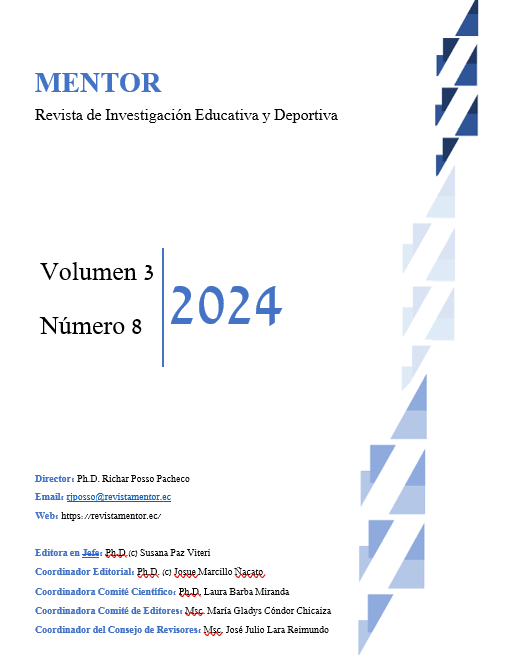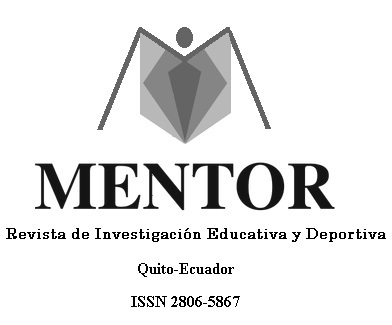Onomatopoeia to Counter Speech Disorders in Early Childhood of Children Raised in Dysfunctional Homes
DOI:
https://doi.org/10.56200/mried.v3i8.7813Keywords:
childhood, onomatopoeia, dysfunctional, context, imitation and strategyAbstract
When talking about speech disorders, reference is made to the deficient development of the language and communication that the student processes within the context in which he or she develops, skills that are affected by a hostile upbringing environment, and produce difficulties in communicating their needs, becoming passive adults in the future, therefore, the research analyzes onomatopoeia as an active, dynamic and stimulating strategy in the development of speech in early childhood children because it encourages and attracts the attention of the student in learning through The imitation of sounds specific to the context, thus, this imitation strengthens the exercise of speech organs, allowing awareness of sounds; Since children imitate, adjust and produce what they hear while they entertain themselves and talk. Therefore, the research is qualitative-quantitative with an observation and measurement methodology by extracting first-source data prepared by the researchers themselves with the help of observation sheets to highlight the problem and the checklist to analyze the scope of the problem. Onomatopoeia, then, explains the level of improvement they have with respect to promoting speech in those children who have grown up in hostile environments.
Downloads
References
Aguado, G., Fernández, A., Gambra, S., Perelló, E., & Vila, J. (2014). Trastornos Del Habla Y De La Voz. Editorial UOC. https://www.uv.mx/rmipe/files/2019/07/Trastornos-del-habla-y-de-la-voz.pdf
Arias, J. (2020). Técnicas e instrumentos de investigación científica. ENFOQUES CONSULTING EIRL https://www.coursehero.com/file/156265111/2020-Jos%C3%A9-Arias-T%C3%A9cnicas-e-Instrumentos-de-investigaci%C3%B3n-cient%C3%ADficapdf/
Campos-Covarrubias, G., & Lule Martínez, N. E. (2013). La Observación, Un Método Para El Estudio De La Realidad. Xihmai, 7(13). https://doi.org/10.37646/xihmai.v7i13.202
Del Río, G., Duarte, L., & Soler, L. (2018). Las onomatopeyas como herramienta para estimular el lenguaje y los procesos de pensamiento en los niños de tres y cuatro años de edad del colegio “nueva generación dumbo” del Barrio Nueva Marsella en la Ciudad De Bogotá D.C. (Tesis). Universidad Santo Tomás. https://repository.usta.edu.co/bitstream/handle/11634/19619/2018leidyduarte.pdf?sequence=1&isAllowed=y
Luque, T. & Delgado, L. (2022). Uso de estrategias con sonidos onomatopéyicos para la estimulación del lenguaje en educación inicial. EPISTEME KOINONIA, 5(1). 1-15. https://dialnet.unirioja.es/descarga/articulo/8976514.pdf
Medina, J. (2013). El entorno familiar y su incidencia en el desarrollo del lenguaje de los niños y niñas de primer año de educación básica de la unidad infantil municipal centro comercial Loja. Periodo lectivo 2011-2012. (Tesis). Universidad Nacional de Loja. https://dspace.unl.edu.ec/jspui/bitstream/123456789/3885/1/MEDINA%20CUENCA%20JUANA%20BEATRIZ.pdf
Mendoza, J. (2009). La medición en el proceso de investigación científica: Evaluación de validez de contenido y confiabilidad. UANL. http://eprints.uanl.mx/12508/1/A2.pdf
Pérez, L. (1994). La onomatopeya y su proceso de lexicalización: notas para un estudio. (Tesis). Universidad de Extremadura. http://hdl.handle.net/10662/2242
Posso Pacheco, R. J., Benítez Hurtado, O. L. Hernández Pillajo, P. C., Marcillo Ñacato, J. C. y Palacios Zumba, E. M. (2022). 15.- La contextualización del currículo priorizado ecuatoriano: una conexión con la realidad de la comunidad educativa. Revista EDUCARE - UPEL-IPB - Segunda Nueva Etapa 2.0, 26(1), 324–340. https://doi.org/10.46498/reduipb.v26i1.1628
Tamayo, M. (2000). Tipos de Investigación. https://trabajodegradoucm.weebly.com/uploads/1/9/0/9/19098589/tipos_de_investigacion.pdf
Universidad Autónoma del Estado de Hidalgo UAEH. (2019). Catálogo de Listas de Cotejo. Dirección de Educación Media Superior. https://www.uaeh.edu.mx/division_academica/educacion-media/docs/2019/listas-de-cotejo.pdf
Published
How to Cite
Issue
Section
License
Copyright (c) 2024 MENTOR revista de investigación educativa deportiva

This work is licensed under a Creative Commons Attribution-NonCommercial-NoDerivatives 4.0 International License.











